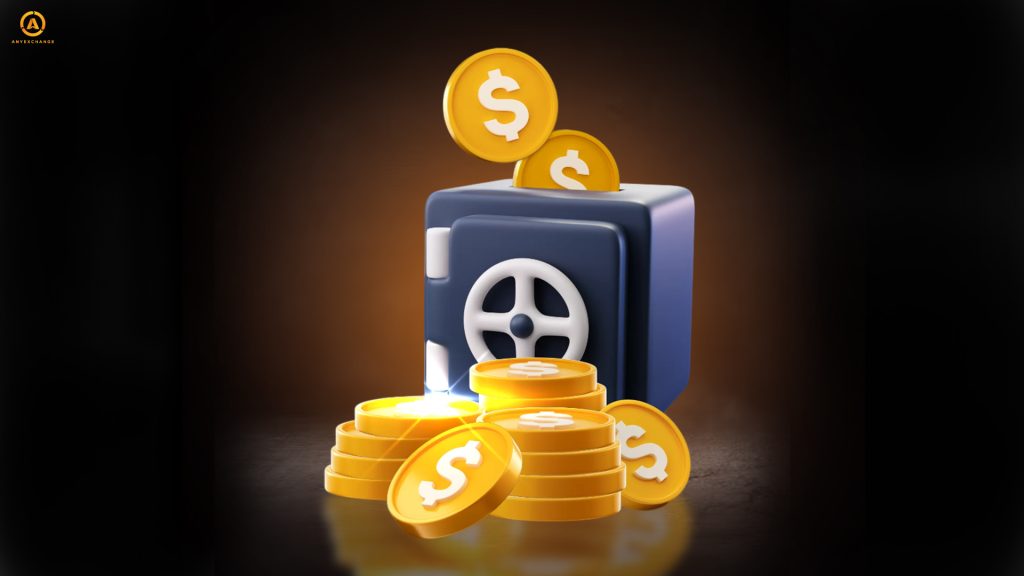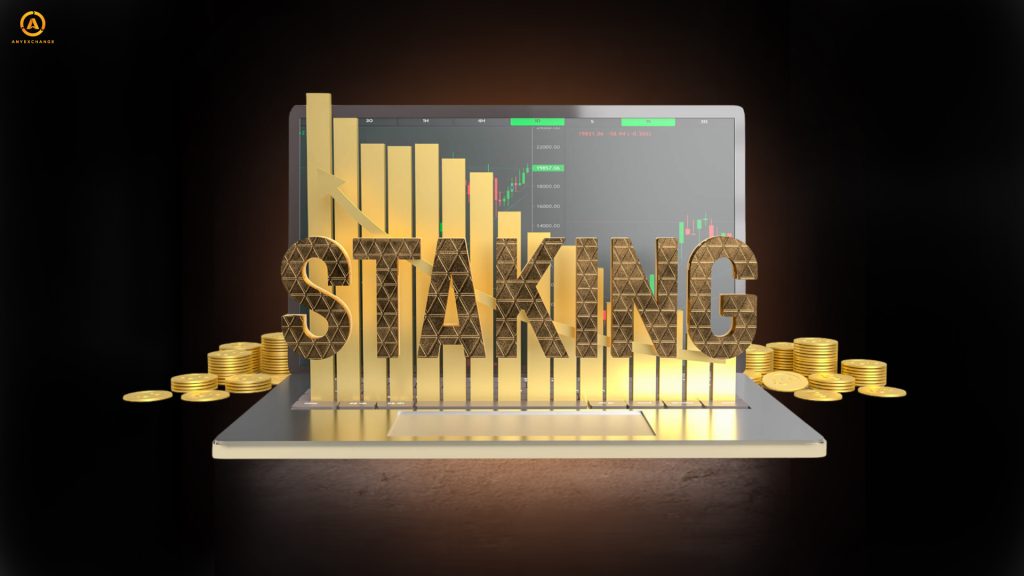
Introduction
Staking is one of the ways to make money in the cryptocurrency industry.
Cryptocurrencies can generate income in different ways:
In addition, there are ways that do not involve reselling it, but they require you to own it. You can go into farming or staking.
For farming, you need to open an account on the exchange in a liquidity pool (many exchanges have this function) with 2 coins, but the price of each coin should be equal to each other. After that, the coins are blocked, but after a certain period of time, you can get them back, along with interest. From this pool, other users take loans and return it along with the commission and interest. In other words, a liquidity pool is analogous to a bank deposit.
While everything is clear and nothing new about pharming, staking is different. You can open a deposit with both fiat and crypto, while staking is only possible in a certain type of crypto ecosystem.
But what is staking? How can you make money on staking? This article will be about this.
How staking works

Staking is an option for passive income. For staking, users rent out their account and the coins on it. In this case, the cryptocurrency does not leave the wallet, but is only temporarily blocked. But who rents an account and what is the point of this?
Cryptocurrency that operates on the PoS or Proof-of-Stake protocol consensus and its modifications can be mined.
Mining is only possible for cryptocurrencies that work on the Proof-of-Work protocol. Mining requires a lot of electricity, machinery that heats up.
On the PoS protocol is not mining, but engaged in validation. There is also a reward for validation, but the one who has more coins, not necessarily his own, processes the transaction. To have more coins, validators rent other people’s accounts, for which they give a part of their profit.
The validator adds a transaction to the block and sends it to two others, if it is correct, each sends it to 2 others and so on, until 67% of validators confirm the correctness of the transaction. Validators can also validate the PoW protocol blockchain. But staking PoW on it is not possible, hence staking bitcoin or other coins on PoW is not possible either.
Types of staking

There are 2 types of staking: Private and public.
Private steaking is a type of cryptocurrency steaking that involves cooperation with a pool of validators, directly and discussing all conditions individually, without intermediaries, in the form of exchanges. Validators launch their nodes in which they block tokens of stakers. This type is popular for large investors, who use earnings on staking as the main one. After all, you need a lot of coins to compete with other pools and entire exchanges.
Public staking is staking on exchanges. It is popular with small investors because there are no minimum investment requirements. Coins and tokens are also blocked in the node, and the staker makes a profit. But here, the conditions are the same for everyone, with no individual approach.
A subspecies of public staking is DeFi or DeFi staking. – What is DeFi staking? – It is used to increase liquidity in projects, the value of the project’s internal tokens, in particular in dApps and meta-universes. Not only coins and cryptocurrency tokens are blocked, but also non-fungible tokens (NFTs).
Stakers block their tokens through smart contracts, gain access to servers or profit in network tokens that allow them to participate in voting within the ecosystem. In dApps, the reward can be NFTs.
Such staking is possible even on centralised exchanges, such as Binance.
How to make money on staking
To make money on staking, you need any PoS network – Ethereum, SOLANA, Polygon, etc. You can stake their tokens, as well as tokens of other networks, even stablecoins, as long as they are compatible with the PoS consensus.
But the amount of income depends on the APR. – What is APR in staking? – It is the amount of profit on investments. Usually, staking on exchanges brings a profit of 5-7%. Depending on the cryptocurrency and the type of staking, the reward can reach 20-30% per year.
For public staking on an exchange, you need to move coins to the platform, and for private staking, you need to block them through a smart contract.
Usually, the reward is credited to the account automatically, but in certain cases, it can be received on demand.
Staking is an investment, which means there is a risk of losing the deposit. In addition, hacker attacks have become more frequent, especially after Ethereum switched from PoW to PoS.
Staking strategies and tips

Investments in staking need to be diversified, because due to the volatility of the cryptocurrency price, its value can fall, and if it is lower than the minimum deposit, you can simply be thrown out of staking. Besides, staking with a lot of cryptocurrencies usually brings a large profit.
It is best if the minimum threshold is covered by fiat stablecoins, as they practically do not fall in value, and the rest is covered by other altcoins.
It is recommended to invest only those amounts that you are not afraid to lose. Plan in advance, because coins from staking can be withdrawn only after it is over.
It is also best to store coins on a cold wallet. In this case, coins can also be staked.
IMPORTANT: If a validator asks you to transfer an amount to your account during cooperation (perhaps promising a higher income), they are scammers, so do not transfer coins to their account.
Technological aspects of staking
Staking often takes place on exchanges. This is because there are fewer rich investors than poor ones and because exchanges provide better protection. The possibility of DeFi staking also plays an important role.
The best platforms for staking due to their reliability are:
To get started, the validator also needs to block its coins. Each coin has its own minimum: 32 coins for Ethereum and 0.5 for SOLANA. These are also blocked. If the validator promotes false transactions, their coins will simply be taken away. Stakers will not receive any profit, so the reputation of the validator is important for private staking.
Risks and challenges of staking
We have mentioned above the penalties for validators who promote false transactions, but this is not the only threat from unscrupulous validators. It is possible that a validator will process transactions whose coins have been obtained through criminal means. If a commission is automatically calculated after each transaction, you may end up with criminal funds in your wallet. Of course, 1% is not a lot, but Tether Limited has frozen the accounts of all those who have financed terrorist organisations (coins can be traced) or who have helped such organisations launder money. If your tokens were previously involved in this, your account may be frozen without warning.
To prevent this from happening, you need to conduct verifications through our AnyExchange service . We will be able to check both all your coins and specific ones. Many investors advise conducting AML checks every 2-3 months or after each staking and publishing information about criminal validators.
If, after checking, your fears are confirmed, contact our manager and we will try to solve your problem.
On the technical side, many believe that PoS has created a decentralisation risk. To prevent the majority of coins from falling into one pool, the founders of Ethereum sharply reduced the profit of stakers. This undermined their credibility and reputation as validators, as the income of the stakers decreased, but for the big ones, it could be the main source of income.
There is also a threat of account theft and hacker attacks. The latter can lead to the shutdown of the validator and, in the worst case, result in the loss of funds.
The future of staking and its role in the cryptocurrency industry
Staking is constantly evolving, otherwise, how else to explain the development of liquid staking: After a user deposits their coins, they receive wrapped coins from the network at a price equal to the price of the investment (not including the amount of the commission). The wrapped coins were in no way inferior to the coins that made up the deposit.
And the founder of Ethereum (the world’s second largest cryptocurrency) decided to switch to PoS due to a large-scale hacker attack in 2016. Does this mean that this consensus is safer – perhaps.
Similarly, some companies see opportunities in creating a liquid Bitcoin staking through its second-level solution, the Lighting Network. Although earlier attempts to create Bitcoin on a PoS network were unsuccessful.
Besides, staking is much safer than farming. After all, banks can make fiat deposits. And staking, as a newer technology, will be more interesting and in demand.
Conclusion.
How much you can earn on staking depends on your strategy, the amount of investment, what coins you have invested, etc. But the main condition for staking is validation.
Validation is 99% more environmentally friendly than mining because it requires only a computer, not a lot of video cards that heat up and consume a lot of electricity. And environmental damage is a frequent reason for criticism of cryptocurrencies; bitcoin has even been called the new oil rather than the new gold. Validation solves this problem, which means that cryptocurrencies will have support even among green energy supporters!
In addition, PoS will allow for greater decentralisation in the future, as it is easier and theoretically possible to get 51% of the total power. But it is impossible to control even 30% of the coins of a cryptocurrency, especially if it has unlimited issuance.






